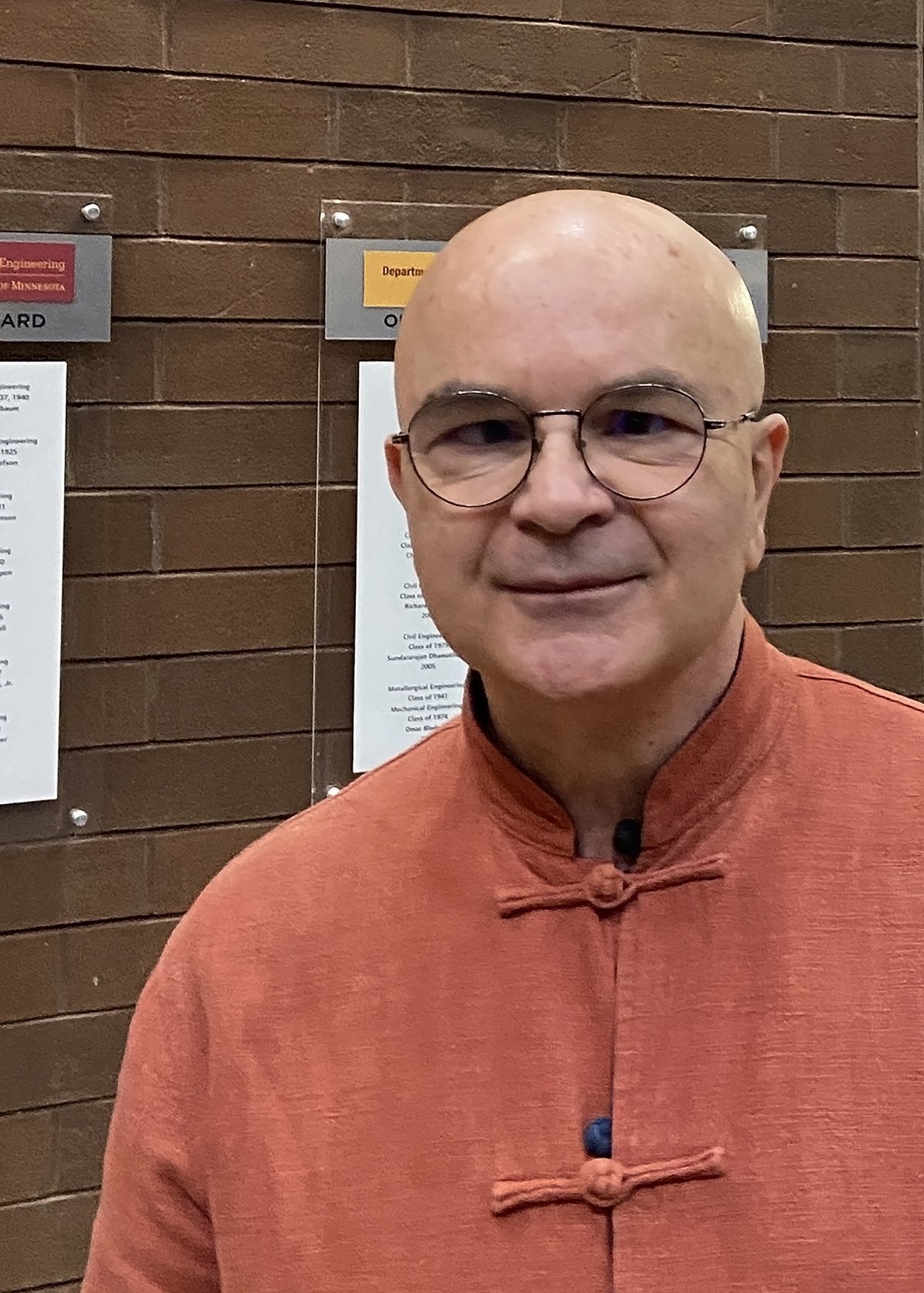Are configurational forces real forces?
A Warren Distinguished Lecture
and 2023 Engineering Mechanics Institute of ASCE (EMI) Elasticity Committee Distinguished Lecture
with Roberto Ballarini
Civil and Environmental Engineering, University of Houston
Abstract
In the Treatise on Natural Philosophy of 1879, Thomson and Tait suggest that any attempt to supersede Newton’s description of the laws of motion cannot but end in utter failure. A force is something that tends to alter a “body’s” natural state of rest, or uniform motion along a straight line, with respect to an inertial observer. The structure of space as given to us in intuition is geometry; it is the possibility of visualizing forces with lines, and their geometrical composition, that facilitates the practical solution of most problems of mechanics. There are cases, however, for which the geometric visualization of such forces is not straightforward. A classical example is that of configurational forces, pioneered by Eshelby to describe the potential movement of defects within the solid state. From the variation of the free energy consequent to the movement of the defect, say an inclusion, an associated force can be inferred due to the natural tendency of the system to achieve lower potential states. However, as admitted by Eshelby himself, such a force is in some sense “fictitious”: its existence is demonstrated starting from a consistent continuum theory of mechanics, but the same theory predicts that the resultant of the traction acting along the boundary of the inclusion is null. Ballarini shows in paradigmatic examples amenable of generalization that a configurational force can be viewed as the resultant of the contact forces acting on the perturbed shape of an object of substance equivalent to the defect, and evaluated in the limit of the shape being restored to the primitive configuration. The expressions for the configurational forces on cracks and dislocations are in agreement with those determined using classical variational arguments. It is hoped that this somewhat novel approach, which has been applied by Bigoni and coworkers to illustrate configurational forces in structural components, may open a new prospective in the use of configurational forces by permitting their physical and intuitive visualization.
Speaker
Roberto Ballarini is the Thomas and Laura Hsu Professor and Chair of the Department of Civil and Environmental Engineering at the University of Houston (UH), and Director of the UH-Dalian Maritime University dual degree program. Ballarini’s multidisciplinary research focuses on the development and application of theoretical, computational, and experimental techniques to characterize the response of materials to mechanical, thermal, and environmental loads. He is particularly interested in formulating analytical and computational models for characterizing fatigue and fracture of materials and structures. Ballarini’s research has been applied to problems arising in civil engineering, mechanical and aerospace engineering, materials science, microelectromechanical systems, biological tissues, and prosthetic design. He has published more than 120 papers in refereed journals, including Science and Nature, and several of his research projects have been featured in the popular press, including the New York Times Science Times, American Scientist, Business Week, Financial Times, and Geo. Ballarini is a Distinguished Member of ASCE, a Fellow of the Engineering Mechanics Institute (EMI) and of ASME; served as President of EMI and as Editor of the ASCE Journal of Engineering Mechanics. He is the recipient of the 2019 Raymond D. Mindlin Medal in recognition of his outstanding contributions to applied solid mechanics.
